43 about energy rating labels
European Union energy label - Wikipedia A new energy label, introduced in 2010, is based on the energy efficiency index (EEI), and has energy classes in the range A+++ to D. The EEI is a measure of the annual electricity consumption, and includes energy consumed during power-off and standby modes, and the energy consumed in 220 washing cycles. For the washing cycles, a weighted mix consisting of … Energy Performance - BFRC How BFRC energy rating labels work. BFRC assesses the energy performance of windows and doors and gives them a rating between A++ and E. Genuine BFRC rated products are labelled with a small official sticker on the inside of the frame and often a large rainbow label on the surface of the window or door: clear, visible proof that they will perform as promised.
Regulations: energy information - GOV.UK 10.04.2014 · Energy labels for certain products are being gradually re-scaled to display A – G energy rating classes instead of A+++ – G energy rating classes. The …

About energy rating labels
BTU vs ASHRAE: Why Portable AC's Have New Energy Guide Labels 05.10.2017 · On these labels, you’ll find three important ratings: An estimation in how much it would annually cost to use the appliance. The energy efficiency rating and overall consumption of energy (determined by testing methods from the DOE) An energy comparison of similar models, with a range of low to high energy expectations. Label | Energy Rating Use the Energy Rating Label to work out rough running costs with some simple maths. It’s easy – just take the energy consumption figure – and divide it by 4. For example, if the Energy Rating Label on a washing machine says it uses 400 kWh, it means it will roughly cost you $100 per year to run. Easy! This is because across Australia energy rates range from under 20 c to just over … Energy ratings: everything you need to know 14.03.2022 · Topten also provides information on what minimum energy rating you might expect to find for a certain category of product. Other information on the label to look out for is the kWh/year figure, as there can be quite a big difference between bigger and smaller models. Don’t buy a bigger product than you need. If you’re interested in finding out more about the new …
About energy rating labels. EnergyGuide Labels | Federal Trade Commission The labels show the highest and lowest energy consumption or efficiency estimates of similar appliance models. The Rule also requires energy disclosures for certain lighting products and water use labeling for certain plumbing products. Energy Rating Label | EECA Energy Rating Label Star rating shows efficiency The Energy Rating Label applies to certain products under the Energy Efficiency (Energy Using Products) Regulations 2002. These products must display the label when they are offered for sale. EECA administers the label compliance in New Zealand. The label also applies in Australia. Reading the Label - AERC Energy Rating The "Warm Climate" rating indicates your potential energy savings when using that particular product when it's warmer outside, and your home may use more air conditioning. Higher energy improvement rating numbers, and those that are closer to the maximum (max) for that product category, will provide greater energy savings. Reaching the "Max" About the energy label and ecodesign | European Commission The EU legislation for energy labels and ecodesign has been estimated to bring energy savings of approximately 230 million tonnes of oil equivalent (Mtoe) by 2030. For consumers, this means an average saving of up to €285 per year on their household energy bills. Moreover, energy efficiency measures will create €66 billion in extra revenue ...
About energy rating labels | EECA The Energy Rating Label helps people compare energy efficiency and running costs of similar appliances when deciding which to buy. Learn more Zoned Energy Rating Label The new Zoned Energy Rating Label tells you which heat pumps/air conditioners will perform best in different climate zones of New Zealand and Australia. Learn more What do energy labels mean? | Green Choices The familiar EU Energy label, rates products from A (the most efficient) to G (the least efficient) and is required by European law to be displayed at the point of sale on the following products: Washing machines, washer-dryers tumble dryers Fridges, freezers and fridge freezers Dishwashers Electric ovens Energy-saving light bulbs Air conditioners Understanding the label | Energy Rating Energy rating labels provide consumers with information on the energy efficiency of a product. There are two main types of labels – comparison labels and endorsement labels. Comparison labels. Comparison labels allow consumers to compare the energy consumption of similar products and factor lifetime running cost into their purchasing decision. Sustainability Victoria | Energy rating labels The Energy Rating Label is an Australian Government initiative. The label uses stars as a way to show the efficiency of an appliance. The more stars, the more efficient the product is. You can use this star rating to compare other models of the same capacity. Most appliances are rated between 1 and 6 stars.
About the energy label and ecodesign | European Commission The EU legislation for energy labels and ecodesign has been estimated to bring energy savings of approximately 230 million tonnes of oil equivalent (Mtoe) by 2030. For consumers, this means an average saving of up to €285 per year on their household energy bills. Moreover, energy efficiency measures will create €66 billion in extra revenue for European companies. How To Use the EnergyGuide Label To Shop for Home Appliances The ENERGY STAR program encourages the use of energy-efficient products that protect the environment and save money. The ENERGY STAR label helps you identify high-efficiency models. To qualify for the ENERGY STAR, a product must meet energy efficiency guidelines set by the U.S. Environmental Protection Agency (EPA). EU energy labelling requirements - Your Europe Since March 2021, the energy label rating system uses A to G rankings only, instead of A+++ to D ratings as before. This new rating system applies to the following product groups: refrigerators dishwashers washing machines televisions light bulbs and lamps The first 4 product groups must feature the rescaled labels from 1 March 2021. Understanding the label | Energy Rating Energy rating labels provide consumers with information on the energy efficiency of a product.. There are two main types of labels – comparison labels and endorsement labels. Comparison labels. Comparison labels allow consumers to compare the energy consumption of similar products and factor lifetime running cost into their purchasing decision.
Energy rating label | energy.gov.au The Energy Rating Label shows the energy efficiency and energy consumption of rated products allowing comparison of running costs over the life of the product. Energy efficiency is shown with a star rating of between 1 and 10 which can be compared to others of the same type and size.
Energy Rating Labels - Buying and Using Appliances | Gen Less The Energy Rating Label makes it easy to compare energy efficiency and running costs of similar appliances when you're deciding which to buy. An appliance with more stars on the label is more energy efficient - meaning you can save money on running costs, and New Zealand can save energy and emissions. Energy Rating Labels explained - Consumer
What is an Energy Rating Label? — EcoAir Online Store What is an Energy Rating Label? All household air conditioners (under 12kW cooling) must comply with the Energy Information (Household Air Conditioners) (No 2) Regulations 2005. This regulation implemented the energy labelling for air conditioners. The key points are:
Create an energy label - GOV.UK You can use the energy label API to create energy labels directly from your product information management system. Published 4 April 2019 Last updated 6 June 2022 + show all updates. 6 June 2022 ...
Dishwashers | ENERGY STAR Save energy and water. A new ENERGY STAR certified dishwasher uses less than a quarter of the energy used when washing dishes by hand and saves more than 8,000 gallons of water each year! Save the environment. ENERGY STAR certified products reduce air pollution and greenhouse gases caused by burning fossil fuels.
Label | Energy Rating Use the Energy Rating Label to work out rough running costs with some simple maths. It’s easy – just take the energy consumption figure – and divide it by 4. For example, if the Energy Rating Label on a washing machine says it uses 400 kWh, it means it will roughly cost you $100 per year to run. Easy!
New 2021 Energy Ratings Explained!| Box.co.uk The new energy rating labels came in to effect on the 1st of March 2021. What does this mean for current products? There will be a transition period following the start date in March, where both the old and new labels will be included on products. This will ensure that you have the right label according to the current regulations.
Energy Rating Labels explained - Consumer NZ Energy Rating Labels have two important pieces of information: the star rating and the energy consumption. Star rating The top half of the label has a star rating of up to 6 or 10 stars. The stars represent how energy efficient a model is compared to other models of the same size/capacity.
Energy Performance Label | National Fenestration Rating Council Door-specific Rating. The circled value shows you the rating a door has received. Each rating is split into two values: Solar Heat Gain, and U-Factor. Solar Heat Gain Coefficient measures how well a product can resist unwanted direct or indirect solar radiation. This radiation can cause your home to heat regardless of outside temperature, which ...
PDF Rating Review Process - Energy The EnergySmart Homes Scale (E-Scale) is a residential label, initiated by the U.S. Department of Energy (DOE), whose rating is developed using the Home Energy Rating System (HERS) Index.
Energy Efficiency Rating Guide | Electricity Prices Other energy efficiency labels in use. There are other labels for other energy saving items such as windows, a building energy rating (BER) for new houses built after 2007 and new ratings and a new label for televisions from mid 2010 which is a first in the EU. Televisions not meeting the new minimum requirements will have to be withdrawn from ...
Label2020 UK | Label 2020 05.08.2021 · The new energy labels for TVs, fridges, dishwashers, washing machines and washer dryers are here. They've helped consumers choose energy efficient products for more than 25 years. They've also helped manufacturers and retailers develop and sell innovative and efficient products. Increased demand for greener products means more efficient products are …
Energy Performance Label | National Fenestration Rating Council Door-specific Rating. The circled value shows you the rating a door has received. Each rating is split into two values: Solar Heat Gain, and U-Factor. Solar Heat Gain Coefficient measures how well a product can resist unwanted direct or indirect solar radiation. This radiation can cause your home to heat regardless of outside temperature, which ...
Energy labels decoded | Currys TechTalk A to G rating On the left-hand side of the label you'll see a scale with different colours from deep green for A all the way through to red for G. A is the most energy efficient and G is the least. To find out what energy rating the tech you're looking at has, check the black pointer symbol next to the scale. QR code
Energy ratings: everything you need to know Mar 14, 2022 · Boilers and other forms of heating such as heat pumps got new energy labels in 2015. Beyond an A++-G rating, the label includes information such as the level of sound they produce and for some product types whether the heater has the capacity to generate electricity – the latter accounting for the fact that the heating market is changing, with more low carbon options.
Energy rating label - Wikipedia In Australia and New Zealand, an energy rating label or energy rating is a label affixed to various appliances prior to retail sale, which allows consumers to compare the energy efficiency of product and allows consumers to know how much power a particular model will use to run.
Energy Performance Ratings for Windows, Doors, and Skylights Energy Performance Testing, Certification, and Labeling. The National Fenestration Rating Council (NFRC) operates a voluntary program that tests, certifies, and labels windows, doors, and skylights based on their energy performance ratings. The NFRC label provides a reliable way to determine a window's energy properties and to compare products.
In focus: A new generation of EU energy labels The new labels will contain a simpler scale (A to G) and it will be easier to compare the energy efficiency between different products. The EU energy label is language neutral, a must as there are 24 official languages within the EU internal market. By scanning a QR code in the upper right corner, consumers will have access to more detailed ...
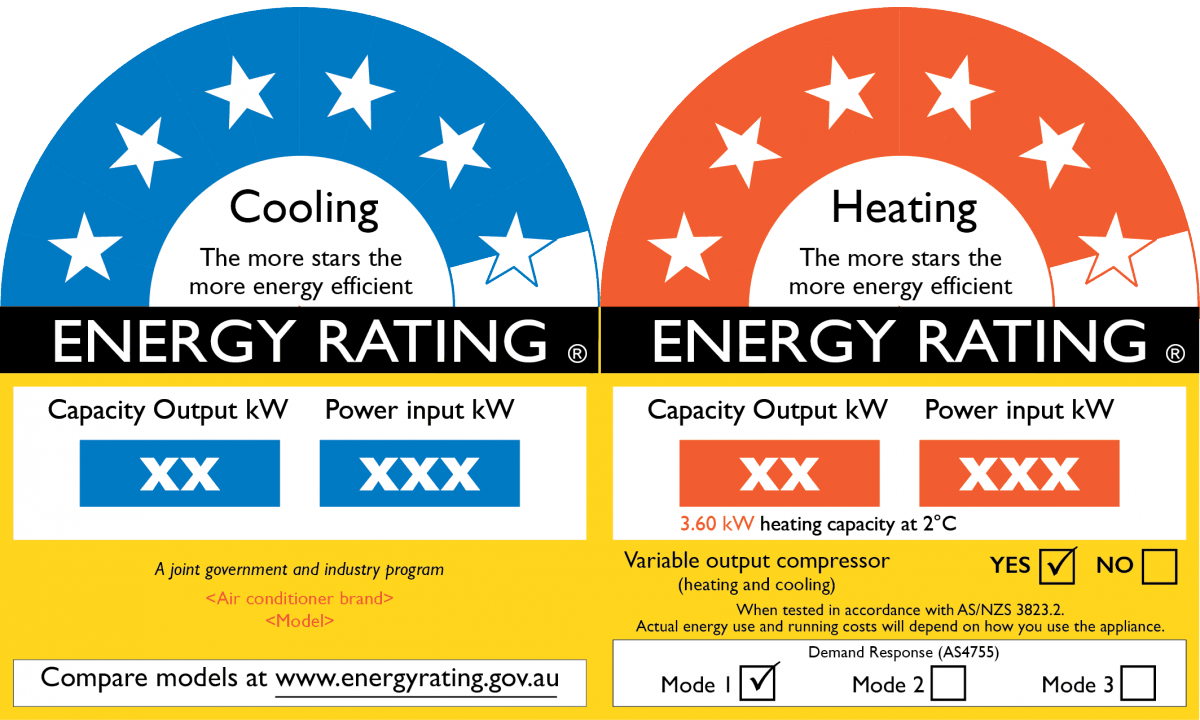


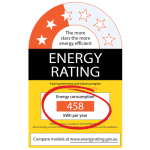
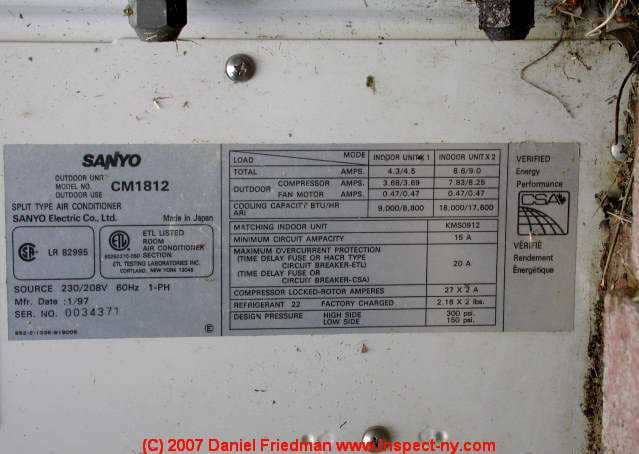
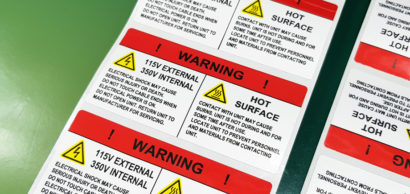

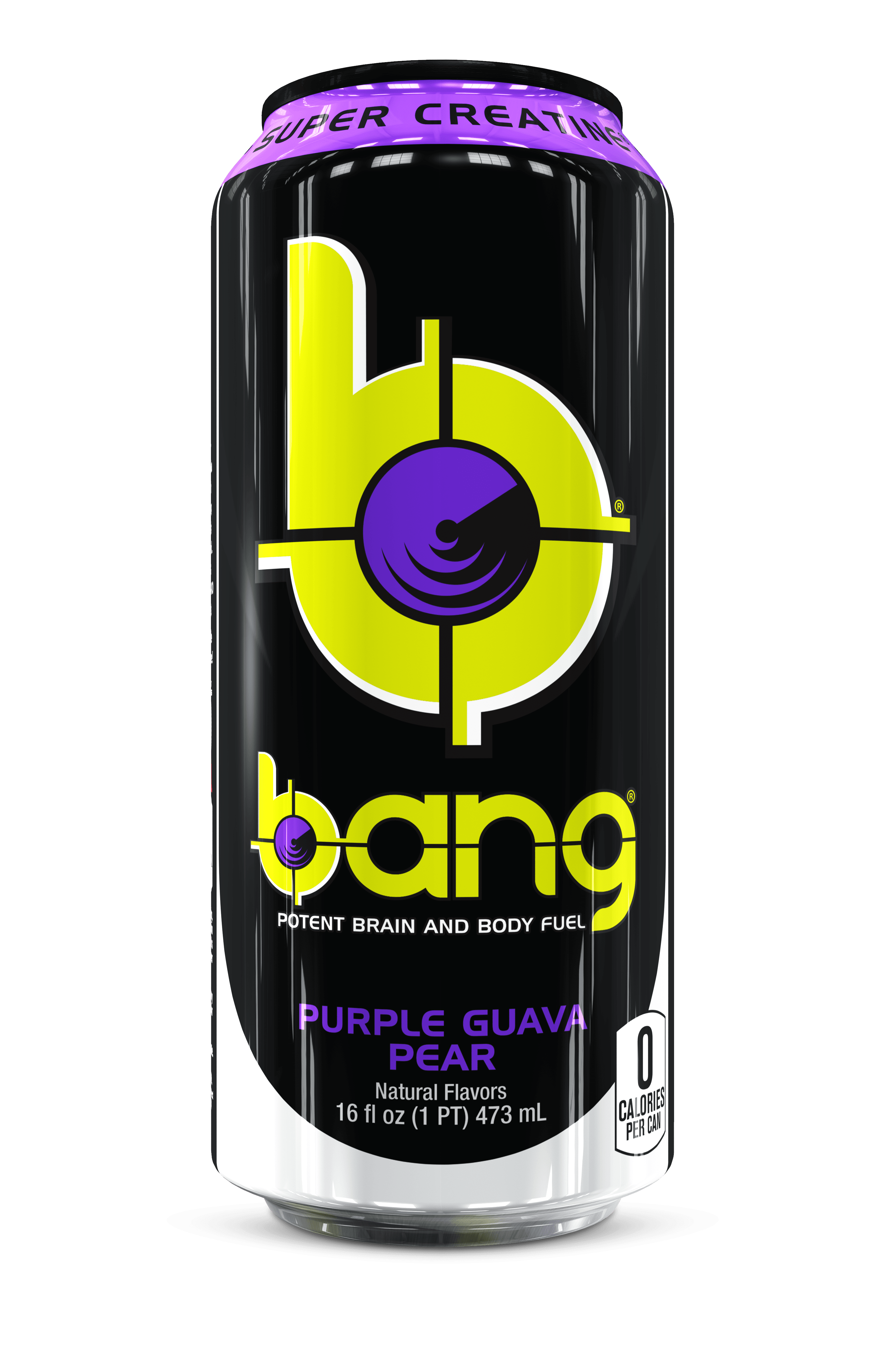

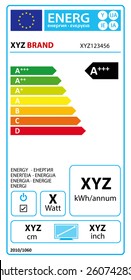
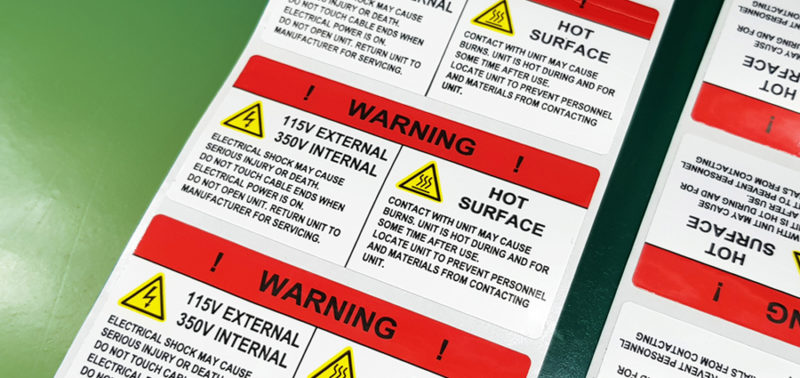



Post a Comment for "43 about energy rating labels"